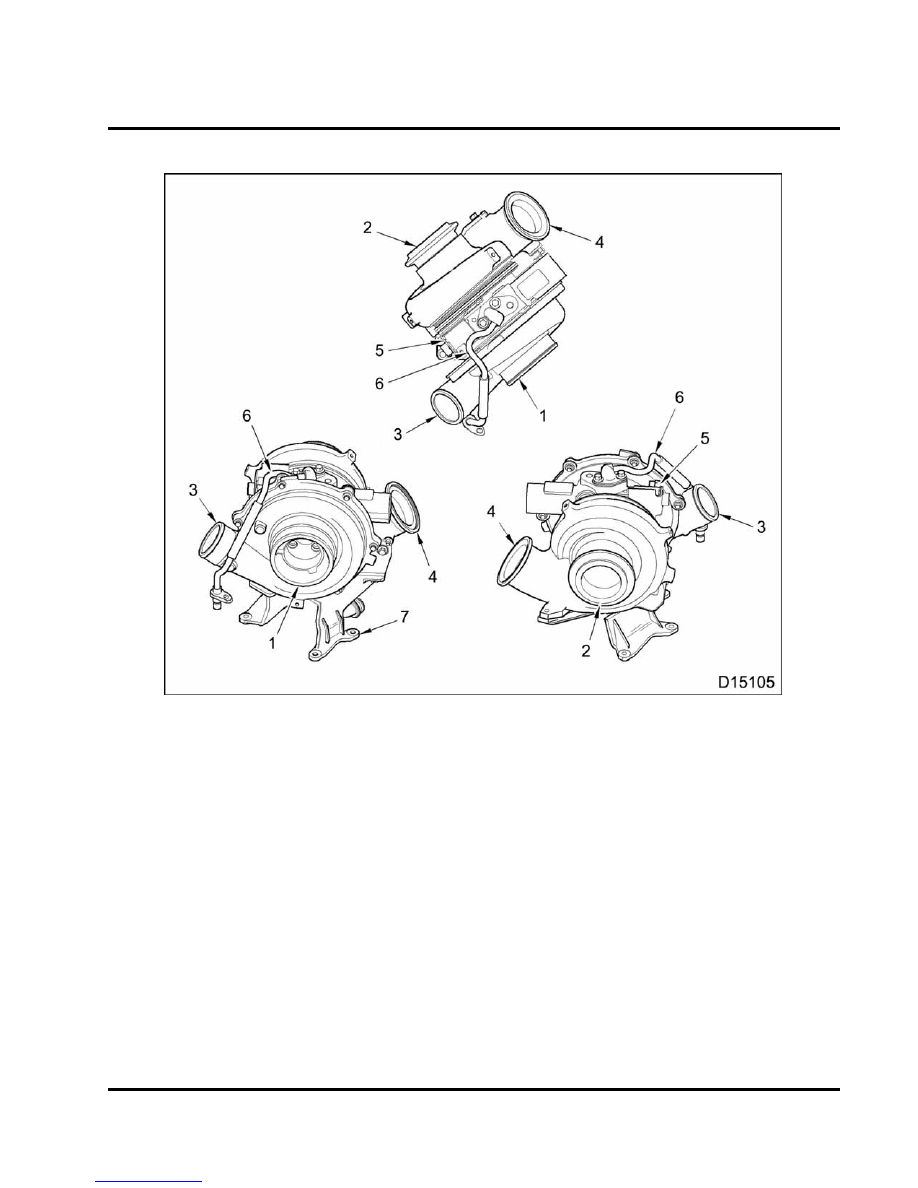Engine International VT365. Manual - part 15

ELECTRONICALLY CONTROLLED VARIABLE GEOMETRY
TURBOCHARGER (VGT)
57
Description
Figure 45 Turbocharger components
1.
Air inlet
2.
Exhaust outlet
3.
Compressor outlet
4.
Exhaust inlet
5.
Turbocharger control valve
6.
Oil supply tube
7.
Turbocharger mounting bracket
Operation
The key feature of the VGT is actuated vanes
in the turbine housing.
The vanes modify flow
characteristics of exhaust gases through the turbine
housing. The benefit is the ability to control boost
pressure needed for various engine speeds and load
conditions.
An additional benefit is lower exhaust
emissions.
The VGT is a closed loop system that uses the
Exhaust Back Pressure (EBP) sensor to provide
feedback to the Electronic Control Module (ECM).
The ECM uses the EBP sensor to continuously
monitor EBP and adjust the duty cycle to the VGT to
match engine requirements.
The solenoid receives a pulse width modulated signal
from the ECM that indicates the on / off time that the
control valve is energized. The control valve directs
lube oil flow to both sides of the piston in the actuator
housing. Directing oil to different sides of the piston
increases or decreases exhaust back pressure.
Actuated vanes are mounted around the inside
circumference of the turbine housing. A unison ring
links all the vanes.
When the unison ring moves,
all vanes move to the same position.
Unison ring